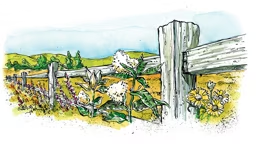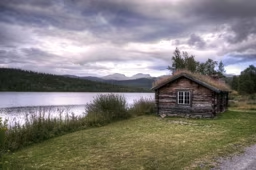– Patti; Port Townsend, Wash.
A: The quick answer is yes; there are things you can plant over the septic drainfield. But a drainfield is a minefield for potentially expensive repairs. So it’s good to hear the long answer before putting a spade in the ground or running any heavy landscaping equipment over the underground perforated pipes, which distribute septic system effluent throughout the drainfield.
The drainfield is comprised of several distribution lines – often up to 100 feet long and buried several inches underground – which are fed wastewater from the septic tank. Older drainfields are made of concrete pipes laid in a series, while newer systems are made from bituminous fiber or PVC pipe. There are three common types of septic fields: standard below-grade in-ground systems; at-grade systems which will show a slight mound above ground; and mound systems, covered by more pronounced mounds of soil, often a few feet high.
A good whack with a pitchfork will break any of the distribution lines and disrupt the delicate sewage system … usually an expensive mistake. A new septic system will cost at least several thousand dollars. So the first thing you need to do is determine the boundaries of your drainfield. That’s easy to figure out with a mound system, but more difficult with a standard buried pipe system.
If you can find the contractor who installed the system, he may have records of the layout. For newer systems, the installer may have been required to file specific plans for your system with the local municipality. Without records, look for other clues: Are there pipes sticking out of the ground that indicate an end point for the septic system? Does the grass grow differently over a portion of the yard, indicating the pattern of the drainfield? If all else fails, call a local septic installer and ask him to come out and help you figure out the boundaries.
Once you’ve established a boundary, restrict any intensive landscaping to areas at least 25 feet outside the area. It’s also a good idea to reserve another area of the property as a potential site for a future replacement septic system, as most existing systems are expected to last only about 20 years.
Do not plant trees, vegetable gardens or deep-rooted shrubs over the drainfield and never use a rototiller on the area. Whenever you plant over a septic field, limit your digging to scratching the surface, a few inches down. Avoid covering any part of the system with a patio, crushed stone or anything that will restrict air circulation through the soil.
You can plant grasses and mow the area regularly, even with a riding lawnmower. But it’s best to avoid heavy tractors or other construction equipment, and never park or drive vehicles over the area. This compacts the soil, which make freeze-ups more of a possibility in northern climates.
Shallow-rooted ground cover plants and wildflowers are also a great choice and help limit traffic over the drainfield.









